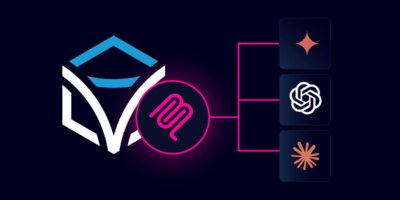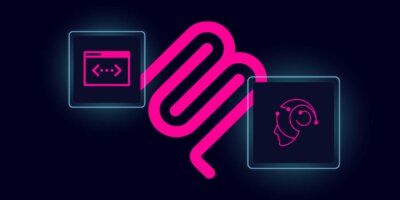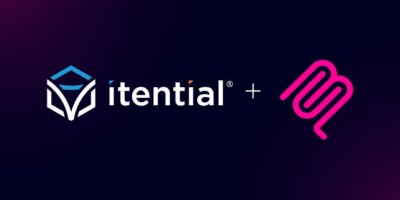Joksan Flores • 00:04
Hi everybody. My name is Joksan Flores. I am a Principal Solutions Engineer at Itential, and today I am very excited to introduce the new Itential Platform MCP Server. This powerful new tool connects your Itential Platform to any MCP-compatible AI services, enabling intelligent automated interactions. With this MCP server, you can discover and explore tools available on the platform, prompt your AI for context-aware insights about your network, interact with your network inventory from the platform, execute commands, retrieve data, launch and monitor workflows with ease using natural language, more importantly, execute prescriptive, well-thought-out design workflows that align with your business processes, and much, much more. Let’s take a look at how it works. Today, we have an Anything LLM UI that we’re using for this session. So I am going to get started with this and show you how it works. So as soon as I start my session, the agent will tell me, this is the iTunes platform. agent, we can chat with it and expose different functions and it’ll tell me the tools that it has access to. So it has access to get information from devices as explained before, workflows and health of the system, it can retrieve compliance reports, start workflows and monitor the status, check the health of the platform, list the inventory and so forth. So let’s get started by taking a look at the server health. One of the things that I’m going to do is actually prompt with some parameters around it. I will ask for the server health in a nice concise summary. Since the agent is getting a lot of data back from the platform, it’ll actually sometimes try to expose a lot of information. But we can see that as soon as I put my prompt in, it’ll actually launch an MCP server request.
Joksan Flores • 02:26
via Itential MCP to get the health of the platform, and it’ll tell me from our laboratory, our lab server, that the overall status of the platform is healthy. It’ll tell me some of the version of the platform, uptime, and so forth, some of the core services that are running, memory consumption, the applications, and it’ll actually tell me, very importantly, some of the status of the adapters that we have onboarded into the platform. So we have 15 adapters, and we have three adapters that are stopped, so the system status shows it’s degraded. Now, this is all on purpose for the sake of this demonstration. Now, based on this output, the agent already has enough information, so we’re going to ask, based on this, based on that, can you tell me what systems is the Itential MCP platform integrated with? So let’s see if we get a good summary of what systems we’re integrated with here. So the cool thing about this is that I get to use my natural language, and at the same time the agent gets to analyze all the outputs from the platform.
Joksan Flores • 03:53
Based on the health information, I can see that the platform is integrated through adapters with AWS, Amazon, Infoblox, Netbox, Panorama, and so forth, and also has some additional integrations with our Itential Automation Gateway. Very, very, very cool stuff. Now next, let’s take a look at the workflows that are available on the platform. Some of these calls will take a little time. Essentially, what’s happening in the background is there’s a tool call executed to get workflows, and then the agent has to analyze the output to provide some meaningful insights based on our questions. Okay, very cool. So here’s a comprehensive list of all the workflows available, 105 total workflows.
Joksan Flores • 04:59
We got security workflows, we got cloud infrastructure management for AWS. We have network provisioning, port turn ups, port troubleshooting, we can delete interfaces, we got Netbox, we got ServiceNow integrations, GitLab, notifications with Slack, Microsoft Teams, and email, device management and troubleshooting, et cetera, et cetera, et cetera. Now, one of the things that is really cool about something like this is that you actually get to define what gets exposed to an LLM or to an agent via the MCP tool. Since our platform is heavily integrated with things such as SSO and has… client accounts or static account configuration, you can actually utilize those accounts and define very, very thought out RBAC or Group Based Access, GBAC, in order to expose only the automations that you decide to expose to the LLM. This is very, very important in this day and age. We don’t wanna give the agent too many capabilities that it can actually hurt our environment.
Joksan Flores • 06:10
So as we gain confidence, we can start by exposing read-only functions to the agent that it can utilize to provide insights. And then from there on, we can expose some more powerful capabilities. So now that we have a list of those workflows, let’s ask some more interesting stuff. So out these workflows, is there one we can use to troubleshoot Well, let’s test the inventory first. Let’s get a… Let’s get the device inventory first from the platform before we go ahead and execute any workflows and let’s see how it goes. So now I’ve asked it for the inventory in a nice table format.
Joksan Flores • 07:20
Okay, so it has retrieved the device inventory, put it in a nice table for me, it’ll tell me the host names, the device types from the platform perspective, IP address ports, who’s the management host and so forth. It’ll also create a very nice summary for me, which is really cool. So total devices, network cloud resources, and so forth, and also infrastructure breakdown by vendor. So a lot of multi-vendor stuff going on. Now, I’m going to ask it next, out of the workflows retrieved before, is there one that we could use to troubleshoot the East Core 1 router? Essentially, what I’m asking is, is there a workflow that we can use to kind of check the health of the devices? Is there a prescriptive workflow that can be used to troubleshoot?
Joksan Flores • 08:19
Now, more interestingly, and one thing that I did on purpose here is to actually type in the name of the router, not exactly in a perfect way, just say East Space Core 1, which is not the actual host name. If we look at the inventory table from before, so I’m going to scroll up a little bit and actually East Core, East-Core-1 is the actual host name, but purposefully, I kind of used natural language just to make sure that we’re kind of testing the agent’s capabilities on identifying what I’m actually trying to do. So based on the available workflows, there are several options that could be used. Router port troubleshooting, it’s recommending me that one, specially designed for router port troubleshooting. It deals with interface issues or connectivity problems. So this workflow will actually bounce some ports. We’re going to stay away from that one.
Joksan Flores • 09:08
We’re actually want to use one of these other ones. Cisco Dryad troubleshooting, the general device troubleshooting, check the overall device health, routing issues, and general diagnostics. It sounds like what we want to do. And there’s others along the way that I recommend this. So what we’re going to do, so we’re actually going to run this one. Let’s see. Now, one of the things that’s actually very cool as well is that at the very bottom, it’ll give you a recommendation and it’ll say, would you like me to start one of these troubleshooting workflows? If so, which one do you prefer?
Joksan Flores • 09:42
Again, this is all based on the context provided by the agent integration using the MCP server into the platform, leveraging those rich APIs that the platform already provides. Well, let’s try this one, the E-score router. I shouldn’t have to tell the device name because it already has it on its session memory, but let’s go ahead and do that. Now, let’s see what it does. One of the interesting things is that our workflow interactions, once they get started, so it’s actually starting the workflow. These workflows are actually asynchronous. Once an API gets submitted, the workflow actually goes in the back-end and starts doing its thing, but the API call ends the transaction.
Joksan Flores • 10:31
We can actually see here if we dive deeper into the actual call, it launched a workflow, we did description, and it passed in some variables, actual device. More interestingly, the ILLM actually discovered, found the workflow that we passed in and we said that we wanted to execute. It actually figured out what the parameters were to launch that workflow via a described interaction or described tool that we have on the MCP server, and it started the workflow successfully. Now, also very cool, it gave me a summary, hey, it started the workflow successfully, the workflow is running, and it says the workflow progress is actually broken out by tasks in here, which is actually very cool. The workflow started, it’s complete. The first diagnostic command was running. Now, what we’re going to do is it says, the progress is zero percent, it just started.
Joksan Flores • 11:28
Would you like me to check the status of this job? To see how it’s progressing and what diagnostic information it’s gathering? Yes. Let’s say yes. Let’s let it monitor the status of that workflow and see how it goes. Okay, awesome. So now we get the results of the troubleshooting workflow. The workflow is completed.
Joksan Flores • 12:01
Total runtime, 12 seconds. So while I was talking, it actually finished the whole thing. The workflow initiated, it executed the first diagnostic command, the second, and the third. The workflow executed three diagnostic commands sequentially to this device. Target device success rate 100%. All commands executed and validated without issues. Everything is working properly.
Joksan Flores • 12:27
The command execution and the device health router appears to be functioning properly. And it also gives us some more options. So we could actually keep drilling deeper and deeper and deeper on this. So very, very cool stuff. Stay tuned in. This is the initial set of functionality on the new potential platform server. There will be more functionality added to this in order to integrate your LLMs to our platform in a seamless manner and take advantage of all the functionality that the platform provides using our AI agents and natural language.
Joksan Flores • 13:06
Thanks for tuning in.


